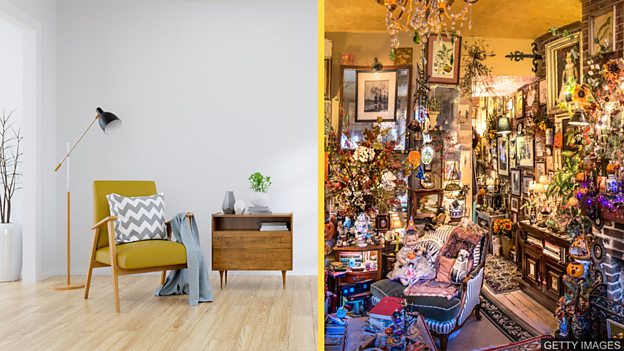随身英语
Minimalism vs maximalism 极简主义和极繁主义

如何装饰自己的家是一件非常个人的事情。你喜欢简单素净还是大胆精致的装潢?本期节目从室内装修的角度来看 “极简主义” 和 “极繁主义” 之间的差异。
词汇:decor 装饰
Some say you can tell a lot about a person by the way they decorate their home. We often find pleasure in the things we stick in our houses, be it trinkets we bought on holiday, film memorabilia or paintings to liven up walls. And when we head to others’ houses, we often see things we appreciate, but wouldn’t have in our own homes, because maybe they’re not quite to our taste. The point is, the way we decorate our homes is very personal. And while many of us have plenty of stuff, there are always people who go that little bit further. So, when it comes to minimalism and maximalism, which one appeals to you more?
Minimalism was an art movement that started in the 1950s. Its basic principles are derived from a concept of ‘less is more’ – reducing things back to their most basic. Some people took that art style and used it as a way of living. Ideas of vast open spaces with an organised and functional structure may spring to mind. They are usually decorated in simple pastel colours, with many minimalists opting for duotone, often just black and white. For some, especially maximalists, it may seem sparse and a bit bland to live without many things – even boring or depressing. However, living in this way is seen by many as more practical.
Maximalism is the opposite of minimalism and started in the 1970s. It embraces the core ideals that ‘more is more’. While minimalism centres around the principle of decluttering, it’s easy to imagine that a maximalist home is overflowing with items – but that’s not the base idea. It’s more about filling the space – making the most of the area. Structured excess and bold colours combined with mixed patterns is what you will see in a home like this. For a minimalist, used to more simplistic designs, it could be overwhelming. But for those who embrace it, those things give a space personality.
The way you have your home is up to you! But, if you opt for maximalism, you may need to prepare for a bit more dusting.
词汇表
stick 放在(家里)
trinket 小装饰品,小玩意
memorabilia 纪念品
liven up 使…有生气,为…添彩
to one’s taste 适合某人的口味
decorate 装饰
minimalism 极简主义
maximalism 极繁主义
less is more 少即是多
vast 巨大的
functional 实用的
pastel (颜色)淡而柔和的
duotone 双色调
sparse 零落的
bland 乏味的
core 核心的
declutter 清理(空间)
overflowing 满得容不下
structured 有条理的,有结构的
excess 过剩
bold (色彩)醒目的,艳丽的
测验与练习
1. 阅读课文并回答问题。
1. What are some of the things we often put in our homes?
2. When did the minimalism movement start?
3. True or False? Minimalist houses often have bright, vivid patterns on the walls.
4. When did maximalism start?
5. How might a minimalist feel in a maximalist house?
2. 选择意思恰当的单词或词组来完成下列句子。
1. If you don’t know where to put it, just _______ it anywhere.
stick excess pastel bland
2. Children need a more _______ education plan to help them develop.
sparse structured duotone stick
3. We should throw away some things to try and _______ the house.
structured bland declutter sparse
4. The cup is _______ with water. You’re making a mess.
declutter sparse duotone overflowing
5. I don’t think the painting is interesting. It’s a bit _______ and boring.
bland declutter stick excess
答案
1. 阅读课文并回答问题。
1. What are some of the things we often put in our homes?
We often put things we bought on holiday, film memorabilia and paintings in our homes.
2. When did the minimalism movement start?
The minimalism movement started in the 1950s.
3. True or False? Minimalist houses often have bright, vivid patterns on the walls.
False. Minimalist homes often have pastel colours on the walls.
4. When did maximalism start?
Maximalism began in the 1970s.
5. How might a minimalist feel in a maximalist house?
They might feel overwhelmed.
2. 选择意思恰当的单词或词组来完成下列句子。
1. If you don’t know where to put it, just stick it anywhere.
2. Children need a more structured education plan to help them develop.
3. We should throw away some things to try and declutter the house.
4. The cup is overflowing with water. You’re making a mess.
5. I don’t think the painting is interesting. It’s a bit bland and boring.



